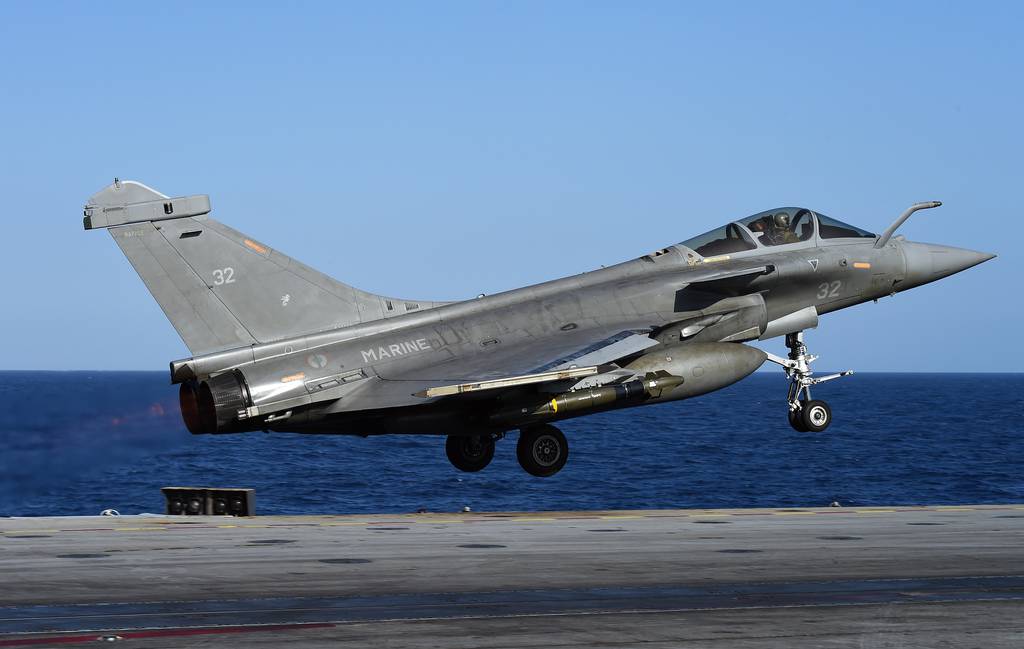The maritime version of the French fighter Rafale is now favoured over the American F/A-18 Super Hornet for the mega-billion-dollar contract to supply 26 jets for Indian aircraft carriers.
The Navy has now sent a detailed report on these two fighters, which were tested earlier this year, to the defence ministry so that they can make a final decision on what will eventually be a government-to-government deal.
According to the report, the Rafale-M from Dassault Aviation is “more suitable in meeting the operational requirements and criteria” of the Navy than the F/A-18 from Boeing, the sources said.
Both fighters went through operational demonstration trials to test their “suitability and capability” at the shore-based test facility (SBTF) at INS Hansa in Goa, which has a ski-jump to look like the deck of an aircraft carrier, earlier this year.
In any case, the French fighter had a head start in terms of logistics and other things because the IAF had already received 36 Rafales as part of the Rs 59,000 crore deal signed with France in September 2016. With the Modi government denying all allegations of corruption in the deal, the IAF now has one Rafale squadron each at Ambala and Hasimara.
In a similar way, Rafales will play a big role in the IAF’s long-running effort to get more 4.5-generation fighters with “some fifth-generation capabilities.” These numbers could range from 57 to 114 fighters, with the majority of them being made in India. The IAF only has 30–31 fighter squadrons left, when at least 42 are needed to deal with the threat posed by China and Pakistan.
The Navy, for its part, has moved quickly to get the 26 carrier-based fighters, especially since September 2, when the country’s first homegrown aircraft carrier, the 45,000-tonne INS Vikrant, was put into service.
Last week, Navy chief Admiral R Hari Kumar said that the 26 fighters were a “interim solution” until the indigenous twin-engine deck-based fighter (TEDBF) being made by the DRDO was ready. It will take at least 10 years for the TEDBF to be fully operational.
As of now, the Navy only has 40 of the 45 MiG-29Ks that were brought in from Russia at a cost of $2 billion from 2009 to 2010. These planes will fly from the deck of the 44,500-ton aircraft carrier INS Vikramaditya, which cost another $2.3 billion. The MiG-29K fighters’ ability to fly has been a major problem for many years.
The INS Vikrant will be fully combat-ready once the MiG-29Ks finish important flight trials from her huge deck and she has all of her high-tech weapons, like the Israeli-made Barak-8 surface-to-air missile systems, by about mid-2023.
The Navy, for its part, has moved quickly to get the 26 carrier-based fighters, especially after the country’s first homegrown aircraft carrier, the 45,000-ton INS Vikrant, went into service on September 2.
